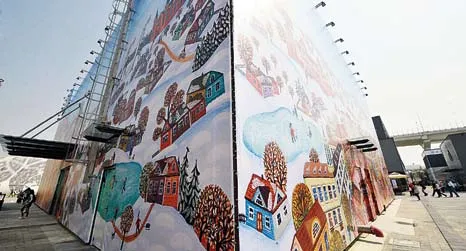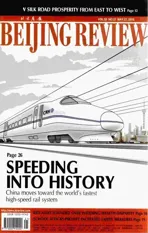IPR Protection in Action
2010-09-12ByTANGYUANKAI
By TANG YUANKAI
IPR Protection in Action
By TANG YUANKAI
Initiatives are being taken to protect Expo-related intellectual property rights
Human ingenuity is on display at the World Expo. Creativity is showcased in many eyecatching pavilions, exhibition items and techniques, live performances, the emblems...and even foods served at the Expo site in Shanghai. These creative works have been patented or copyrighted, which means that they can not be used without permission.
The Chinese Government thinks highly of the intellectual property rights (IPR) protection at the Expo and has taken a series of measures to safeguard it, said Tian Lipu, head of the State Intellectual Property Offce (SIPO) on April 26.
Since Shanghai won the bid for the World Expo in December 2002, several regulations on the protection of Expo-related IPR have been published. These include the Regulation on the Protection of World Expo Symbols issued by the State Council in 2004 and the Outline on World Expo IPR Protection in 2007. These regulations provide institutional guarantees regarding Expo-related IPR protection. The government realizes that the protection of ideas is fundamental to the success of the World Expo.
China provides two channels for the protection, said Xu Chao, an official in the Department of Copyright Management of the National Copyright Administration. The frst is judicial—to protect IPR through civil actions or criminal actions; and the second is administrative. That is to say, government departments including the SIPO, the Trademark Offce and the Copyright Offce will provide protection according to laws and regulations in China, such as the patent, trademark and copyright laws.
Qiu Yichuan, Deputy Director of the Legal Department of the Bureau of Shanghai World Expo Coordination, said Expo-related protection primarily covers these items:
● The name, emblem, fag, mascot, anthem, thematic term, and slogan of the 2010 World Expo;
● The names and symbols of the 2010 World Expo’s bidding committee and organizing committee;
● Expo participants’ IPR, including pavilion designs, emblems, trademarks, inventions, literary and artistic works, among others;
● Patented or copyrighted works of third parties other than the organizer and participants. For instance, background music played at various venues.
At present in China, an IPR protection mechanism involving legislation, judiciary, administrative enforcement and legal services has been formed, said Gan Shaoning, SIPO’s Deputy Director.

EYE-CATCHING PAVILION: The photo shows the Belarus Pavilion. World Expopavilion designs and artistic works are primarily covered by Expo-related intellectual property rights protection
Last year, SIPO and other government departments sent a joint investigating group to Shanghai to study Expo IPR protection and formulated special action plans. The State Administration for Industry and Commerce (SAIC) also signed a cooperation agreement with the Shanghai Municipal Government on the protection of Expo-related trademarks.
On January 20, eight government departments, including the SIPO, Ministry of Public Security and the General Administration of Customs, jointly issued a notice on special actions on Expo IPR protection. Since January, China’s customs authorities have uncovered five cases of infringement, which involved unauthorized use of the mascot and emblem on products such as lighters, toothbrushes and brochures.
To speed up the resolution of IPR disputes and protect the rights of IPR owners in a timely and effectively way, the Bureau of Shanghai World Expo Coordination, with help from SIPO and SAIC, has set up an IPR protection network, so that it can share relevant information with Chinese provinces, autonomous regions and municipalities.
Expo organizers have also printed and distributed a guidebook on IPR protection for the Expo which is available in Chinese, English and French. Participants have been given documents informing them they will be given priority if they apply to register trademarks and inventions debuted at the Expo within six months from the initial date of display.
A document advising participants on protecting IPR of literary and artistic works has also been distributed.
Participants have also been given a list of reputable, qualified consulting agencies which will help them with patent or copyright applications in China. Also, a service center has been set up at the site to help participants with related issues.
Volunteers selected from university students in Shanghai have received formal training to provide consulting and information services on Expo IPR protection.
“Every original piece of work showcased at the World Expo crystallizes human wisdom, and should be put under IPR protection,” said Hong Yongqing, an official with the Shanghai Intellectual Property Administration, at the opening ceremony of a training session for the volunteers in April.
In addition to building a legal framework, raising public awareness about protection is also necessary, said Wei Jianhua, an offcial at the Legal Department of the Bureau of Shanghai World Expo Coordination. He said while visitors can take photos and use camcorders at the Expo site, they need to be aware that images and recordings can be used only for personal purposes, and unauthorized use for commercial purposes will be penalized. The organizers also compiled a manual outlining protection measures which was distributed to Shanghai residents before the Expo even opened.
